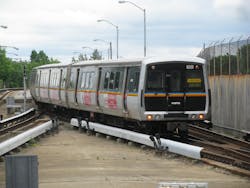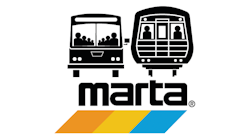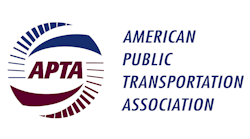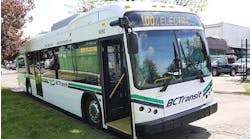At the 2017 APTA Rail Conference in Baltimore, Maryland, a session focused on technology and safety provided insight about how technology is changing to be a more applicable tool.
The Metropolitan Atlanta Rapid Transit Authority spotlighted the issue of keeping track workers safe. The Federal Transit Administration granted MARTA and Bombardier Transportation a partnership to deploy the TrackSafe technologyand since the deployment they’ve seen positive results.
“TrackSafe really has three purposes. It provides warning for people as the train approaches and it provides control over access to the right-of-way and to the rail control as well as keeping the real-time position as to where the train is actually on,” said Mark Willer, product manager-technology solutions, Bombardier Transportation.
When MARTA partnered with Bombardier to introduce the program, the first thing that the agency wanted to develop was a program that would be most effective for them.
“We sat down with our boots on the ground and tried to develop something that works for us and made it a little more acceptable for us to deploy,” explained Abhay "A.J." Joshi, PMP, LEED AP, program manager, MARTA. “We actually got a prototype and did a demonstration for the FTA. We did the Red Line, which is the northern most line of our system. We chose that track to show a lot of different nuances. We looked at a lot of different situations. We decided to go with power from Bombardier. We accepted their implementation plan and we are about two months in.”
Joshi said that MARTA will have a demonstration this October at APTA Expo. He added that MARTA is focused on completing the installation in time for the conference, and is finishing up the last few steps including:
- Completion of installation
- Testing and commissioning
- Finalizing SOP Review
- Production of E-learning course
- Training
- Operating period
- Independent review
Technology Behind TrackSafe
"There are three key pieces of equipment. The Wayside Access Unit, which is typically posted on the corner of the station. That information goes back to the rail control," Willer explained, adding that currently with other systems that information is transmitted verbally. The Tag In Unit (TIU) is also part of the protection system and connects with the TrackSafe system. Operator warning lights are designed to warn operators that they are approaching someone on the system."
Willer said that the warning lights can be programmed to utilize different colors and can flash to represent different meanings for those on the tracks.
When a worker is assigned to a task they are able to check in at the Wayside Access Unit. "The check-in knows what you are going to be doing, what you will be working on and where," said Willer.
The second screen that is displayed confirms that the worker has all of the necessary safety equipment and tools that will be needed to complete the work. Joshi explained that it is important to be clear when implementing new technologies what it is exactly that you are doing, and how it will operate.
"We aren’t Big Brother; we aren’t trying to find exactly where you are on the track. We want you to know when a train is coming," said Joshi. "From the beginning we wanted to make sure that was key and then they really helped us in making sure we have the right horn and the right lights."
Questions arose as to how time-consuming it would be to provide maintenance to the unit.
"One of the things that we’ve done with TrackSafe is make it very easy to replace. You literally unplug it and there are two bolts. You’re not talking about any extra equipment," Willer said. "If there is a piece not working, Bombardier will know probably before MARTA does and we’ll know that piece of equipment needs to be change. That being said, the whole design philosophy is that we over inspect things so that it will last 10 or 20 years."
Security and Safety
An issue that seems to rear its head frequently on rail lines is vandalism. The Wayside Access Unit, while located on the corner of stations, has not been affected. Willer said, "The prototype one that was installed has survived three years without being disturbed so we are pretty confident that they are vandal resistant."
As more technology is implemented within systems, how can agencies make sure that its workers don't become fully dependent on it in the event that an issue were to arise?
"For MARTA, our training is pretty robust. We do have fail-safes out there, but the training is really hammered home," explained Joshi. "The natural tendency is want to rely on these things, but we’ve been very adamant that people call these a secondary device."





